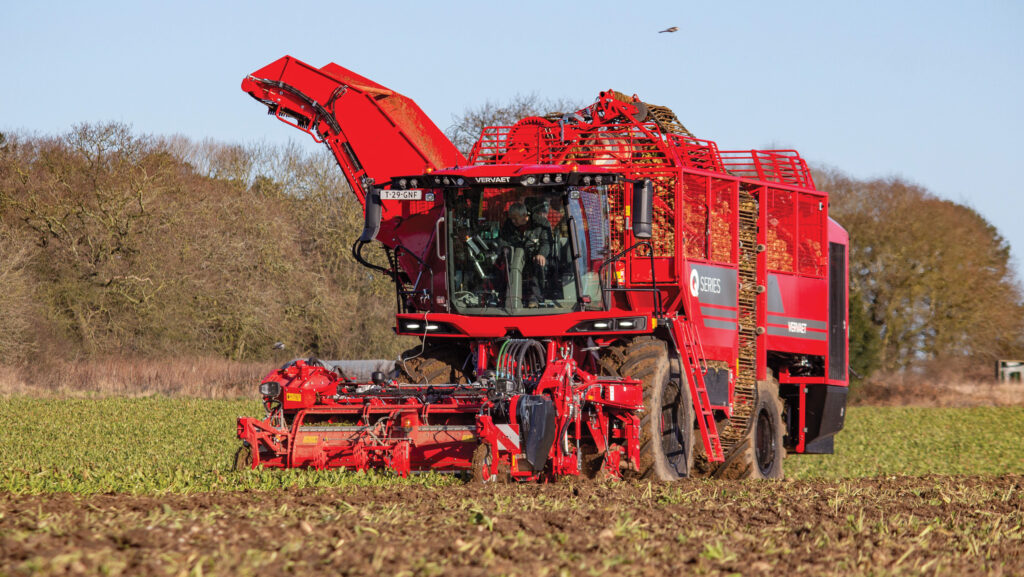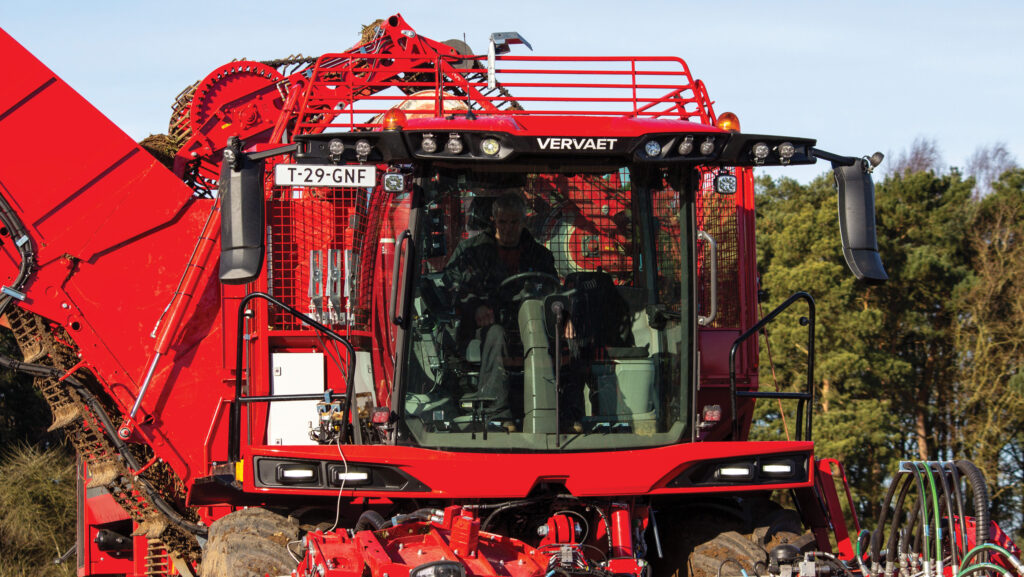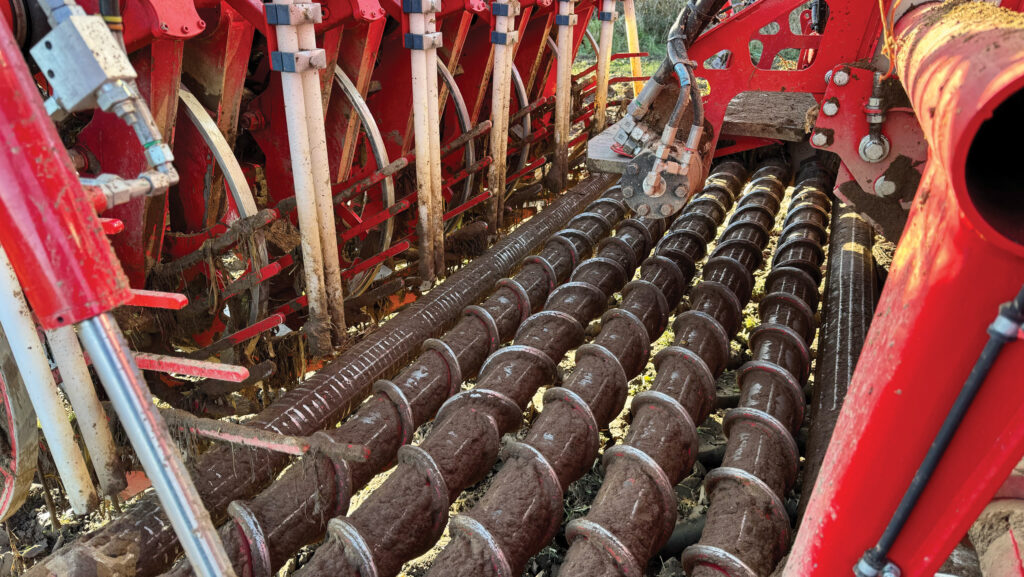Vervaet’s Q-616 gets new cab and slicker hydraulics
 © MAG/Oliver Mark
© MAG/Oliver Mark Vervaet has updated its four-wheel Q-616 beet harvester, with a fresh cab, slicker hydraulics and new break-back protection for the shares.
With supplies of the old Claas X10 cockpit exhausted, the company had no choice but to ditch it for the X11 version that debuted on the German manufacturer’s Trion combines.
See also: Sugar beet chaser beats sticky ground for Suffolk contractor
That’s no bad thing as far as operators are concerned, as it’s bigger, quieter and better equipped than before.
And, with the change, Vervaet has taken the opportunity to revamp all the electrics and software.
Everything, including the lights, now runs through the canbus control system, the main cab screen has grown to 10in and, thanks to an in-house software rewrite, it should be easier to navigate.
Rather than having to wade through several page layers to find required settings, they’re now accessed simply by tapping one of the home-screen icons.
Buyers get the choice of Claas’s own rugby ball-shaped joystick – as found on all its high-horsepower, self-propelled machines – or a more conventional upright handgrip.
Visibility has been improved too, with new fully electric mirrors and more cameras added to the tail end. These are viewed through a set of three pillar-mounted displays, one of which includes a 360deg bird’s eye perspective that stitches several wide-angle feeds together.
Handily, the live footage automatically switches between cameras trained on the lifting gear and those associated with unloading.

© MAG/Oliver Mark
Vervaet Q-616 specs
- Engine 530hp DAF Paccar
- Hydraulics Sauer-Danfoss
- Bunker capacity 18t
- Max transport speed 40kph
- Max field speed 15kph
- Turning radius 1.6m
- Unloading time 50sec
- Unloading height 1.9-4.5m
- Price £580,000 (turbines only)
Smoother hydraulics
Though hydraulic output remains unchanged, the system has been fettled to improve efficiency and responsiveness.
Highlights include new pumps and valves, and a more streamlined circuit with rerouted pipes that, together, help keep the oil cooler.
Unloading is quicker as well, says Vervaet, thanks to proportional automatic speed adjustment of the tank floor chains, as opposed to the simpler on-off system before.
This can potentially shave up to 25% off the time taken to empty into a trailer or onto a heap, and there should be less wear on the chains as they only run at the required speed – determined by on-board ultrasonic sensors.
There’s no change to the 530hp DAF Paccar powertrain though, bar a minor rerouting of the exhaust.
Lifting gear

© MAG/Oliver Mark
The Q’s last major front-end update came three years ago, with the introduction of a rollerbed alternative to the turbine-only primary cleaning system.
This, which adds about £23,000 to the £580,000 starting price, now accounts for roughly 30% of UK Q-616 sales.
Unlike other rollerbed-type harvesters on the market, which use an elevator trace to transport the crop between the front wheels, the Vervaet design uses a central cleaning turbine.
This simpler approach is said to eliminate the risk of it jamming in claggy clay soil and also helps maintain decent ground clearance.
Meanwhile, the firm’s lighter-weight, third-generation front end is now fitted as standard, and it comes with the choice of three toppers.
These are the Integral that shreds the beet scalps and deposits them between the rows, the Combi that adds the option of spreading to the side, and the double rotor DCR that swaps scalpers for flails – albeit not a popular option in the UK.
New features include scope for hydraulic rail gate adjustment on all four cleaning turbines, as a belt-and-braces alternative to having it only on the front two.
And each share unit can be specified with its own hydraulic ram to provide protection from immovable objects – a setup that allows operators to set the break-back pressure according to the field conditions.
There’s also a different potentiometer on the share steering, which Vervaet reckons will improve the consistency and accuracy of their work in autosteer mode.
Production-ready
Since succeeding Vervaet’s Beet Eater 617 in 2017, the 27t Q-616 has established itself as the UK’s favourite sweet-toothed harvester.
The company shifted seven of them last year, and another four six-wheel Beet Eaters – a tally that accounted for well over half of total beet lifter sales on these shores.
Production of the latest model is slated to start in April and, with several already on order, they should be roaming windswept fields during next winter’s campaign.

